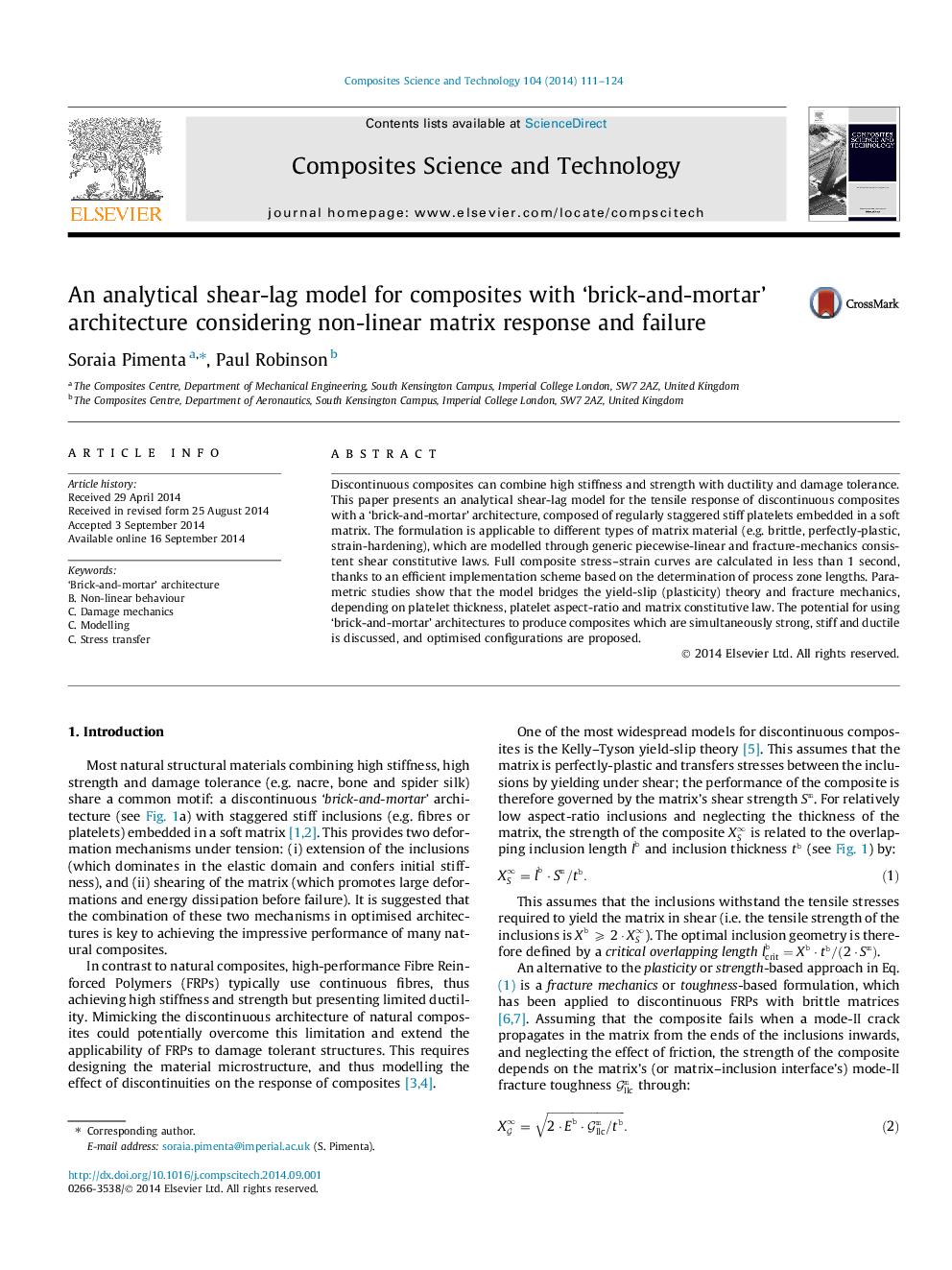| Article ID | Journal | Published Year | Pages | File Type |
|---|---|---|---|---|
| 820212 | Composites Science and Technology | 2014 | 14 Pages |
Discontinuous composites can combine high stiffness and strength with ductility and damage tolerance. This paper presents an analytical shear-lag model for the tensile response of discontinuous composites with a ‘brick-and-mortar’ architecture, composed of regularly staggered stiff platelets embedded in a soft matrix. The formulation is applicable to different types of matrix material (e.g. brittle, perfectly-plastic, strain-hardening), which are modelled through generic piecewise-linear and fracture-mechanics consistent shear constitutive laws. Full composite stress–strain curves are calculated in less than 1 second, thanks to an efficient implementation scheme based on the determination of process zone lengths. Parametric studies show that the model bridges the yield-slip (plasticity) theory and fracture mechanics, depending on platelet thickness, platelet aspect-ratio and matrix constitutive law. The potential for using ‘brick-and-mortar’ architectures to produce composites which are simultaneously strong, stiff and ductile is discussed, and optimised configurations are proposed.
